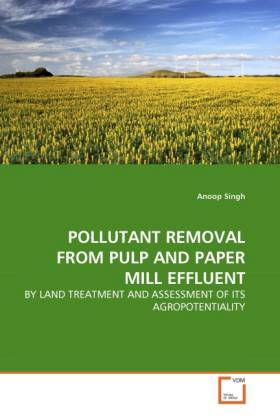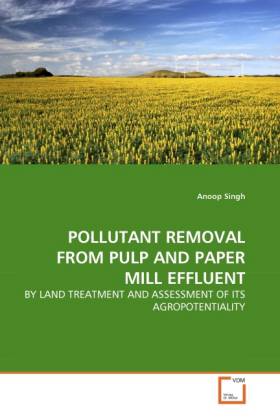
- Afhalen na 1 uur in een winkel met voorraad
- Gratis thuislevering in België vanaf € 30
- Ruim aanbod met 7 miljoen producten
- Afhalen na 1 uur in een winkel met voorraad
- Gratis thuislevering in België vanaf € 30
- Ruim aanbod met 7 miljoen producten
Zoeken
€ 48,45
+ 96 punten
Omschrijving
Pulp and paper mill ranking fifth among the major industries for water pollution problem in India. Its liquid effluent often discharged in natural habitat impairs the health of ground water, crop & soil and thus poses serious threat to the environment. The land treatment of effluent costs negligible, requires thorough understanding of soil-plant- effluent interaction. In view of this, present study aims to assess the role of land treatment in pollution removal from pulp & paper mill effluent. Three soil column heights viz: 20, 40 and 100 cm for two soil textures ST1(normal soil) and ST2 (normal soil: sand:: 1:1) were taken for the study. Significant reduction in pollutants was found, when effluent was passed through normal soil of 100 cm column height. As the column height reduced, pollutant removal also reduced. Growth of wheat plant was maximum at 50% effluent irrigation at sand mixed soil. Study revealed that 100 cm soil column height resulted best pollutant removal that hampers ground water pollution as well. Thus the land treatment could be profitably practiced in Tarai and Bhawar region of Uttaranchal, where 1 metre thick soil layer is often available.
Specificaties
Betrokkenen
- Auteur(s):
- Uitgeverij:
Inhoud
- Aantal bladzijden:
- 108
- Taal:
- Engels
Eigenschappen
- Productcode (EAN):
- 9783639363500
- Verschijningsdatum:
- 9/06/2011
- Uitvoering:
- Paperback
- Formaat:
- Trade paperback (VS)
- Afmetingen:
- 152 mm x 229 mm
- Gewicht:
- 167 g

Alleen bij Standaard Boekhandel
+ 96 punten op je klantenkaart van Standaard Boekhandel
Beoordelingen
We publiceren alleen reviews die voldoen aan de voorwaarden voor reviews. Bekijk onze voorwaarden voor reviews.











